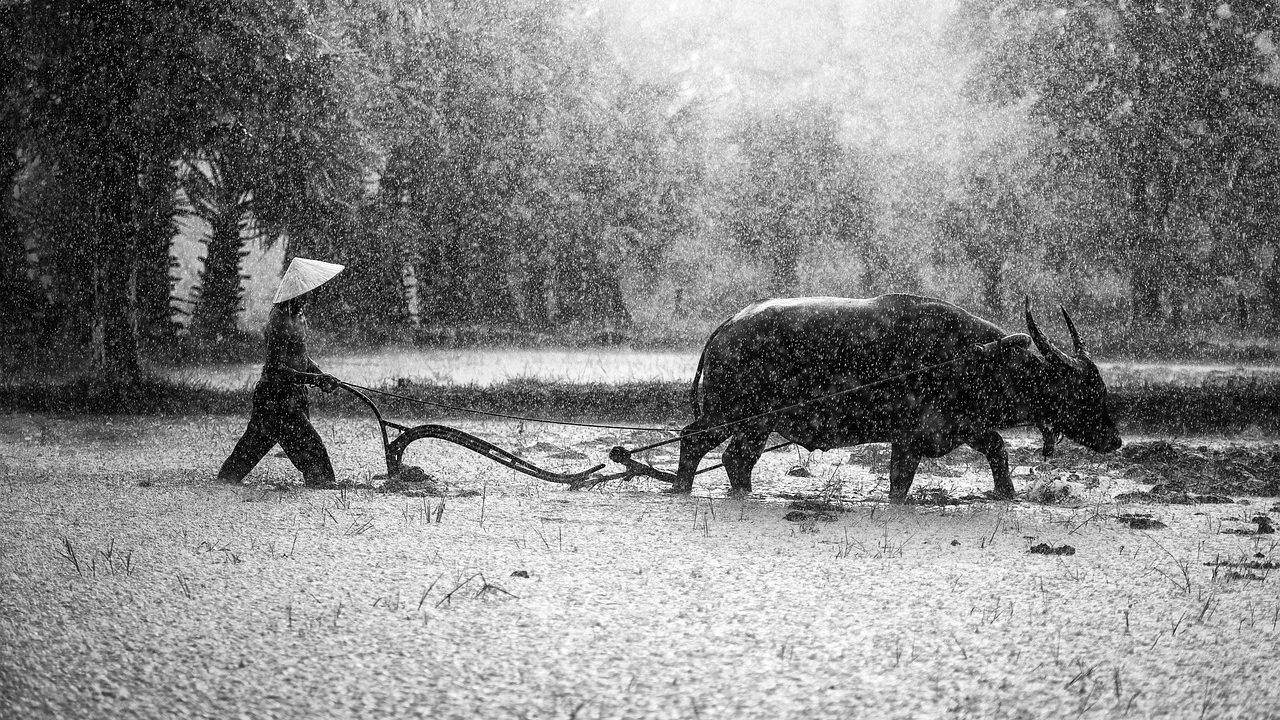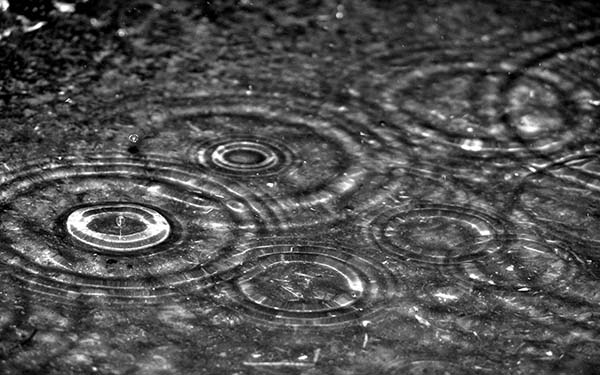Dizang asked Xuishan, “Where do you come from”
Xuishan said, “From the South.”
Dizang said, “How is Buddhism in the South these days?”
Xiushan said, “There’s extensive discussion.”
Dizang said, “How can that compare to me here planting the fields and making rice to eat.”
Xiushan said, “What can you do about the world?”
Dizang said, “What do you call the world?”
I was heartened to learn, earlier this week, that we have a number of people preparing to take Jukai during this retreat. For those who don’t know, Jukai is the ceremony during which a Zen practitioner formally receives and acknowledges the Sixteen Bodhisattava Precepts as trainings for their lives.
In an article for Lion’s Roar, Diane Eishin Rizzetto, a teacher in our own White Plum lineage and a dharma heir of Charlotte Joko Beck, had this to say about the root Japanese words that make up the word Jukai.
Jukai is made up of ju, “receiving/granting,” and kai, “precepts.” At a deeper level, ju means to open a space within the core of our being to what is natural and true. It is, perhaps, more like “making” a space in which the precepts can manifest as what is natural. So, in this sense, ju opens to what is
At a deeper level, kai refers to the precepts not merely as rules that keep us straight on the path, but as signposts that point us toward naturally acting for the benefit of all beings. The way of the precepts is the path of going beyond the dream of self. It is the path that reveals the truth that our own happiness and well-being is intricately connected to the happiness and well-being of others.
Although one does not need to take Jukai to practice Zen or to benefit from using the precepts as guideposts toward living a gentler, more examined existence, the ceremony can be a meaningful and transformative one for those who do undertake it. For one thing, this ceremony is when a Zen student receives their first rakusu—the bib-like garment you see many of us wearing—and may, from then on, wear it during zazen and services. The student also receives a Kechimyaku, or a bloodline chart tracing one’s dharma lineage from oneself all the way back to Shakyamuni Buddha and the past Seven Buddhas of previous dharma ages.
I use the word “receives” lightly, here, because, by tradition, most practitioners, if they are able, make these items for themselves, by hand, over the course of several weeks or months leading up to the ceremony. So, when the preceptor “gives” them to the student during the ceremony, what is given was really already theirs, all along. Imagine trying to pull off that trick this year at Christmas. Honestly, my kids have so many toys, I probably could get away with sneaking into their playroom and wrapping up a few of the things in there to put under the tree this year.
This brazen sleight of hand is only the first in a series of similar practical jokes we Zen teachers play on practitioners though the course of their training. Like the rakusu and lineage paper, the precepts themselves can’t really be given or received. They are always ours, waiting quietly in our hearts for us to align our lives with them. What happens during the jukai ceremony, then, is just a public acknowledgement of our intention to do so, much like a marriage ceremony, where a realization of what one loves and values that has grown and solidified, bit by bit, over time is finally made public for all to witness. In some of the Christian traditions, these moments of acknowledgement are called sacraments, which St. Augustine defined as “outward and visible signs of inward and spiritual graces.”
One might, if one were of a particular temperament, be tempted to write off the importance of such outward and visible signs as extraneous to the project we’re about here, and that’s fine for those who are of that temperament, but I’ve found that enacting such rituals can have a powerful effect on one’s mindset. After all, much as some people wish to define Buddhism as a branch of philosophy, Zen is, at its core, a praxis. Although there is undoubtedly a point of view associated with Zen—that all of reality is intimately interconnected, and that compassion is the natural byproduct of that knowledge, for instance—we are not here to believe things, but to enact things. Zazen is one way we do this. By sitting down, straightening the back, softening the gaze, and taking an open-handed approach to working with our thoughts, neither grasping onto them or pushing them away, we embody the activity of Buddha. It’s not an imitation or a rehearsal. In taking the physical and mental posture of zazen, we bring Buddha to life right here, in this space.
The precepts are another way we can enact Buddha. That’s how important they are. Far from being a dead set of stale regulations from a different cultural context, thousands of miles, and more than 1,000 years from our own, the precepts are a description of the life of a Buddha. They are also not training wheels for good behavior that we use until we fully wake up and no longer need them. The precepts are awakening itself. When we work with the precepts, we see with Buddha’s eyes, speak with Buddha’s mouth, and touch with Buddha’s hands.
Some Buddhist traditions have different numbers of precepts, five or fourteen for laypeople in some Mahayana traditions, all the way up to 227 or 348 for monks and nuns, respectively, in the Vinaya traditions. The Sixteen Bodhisattva Precepts are unique to Soto Zen and come down to us from Dogen, the Japanese founder of our branch of the Buddhist family tree.
They are:
The Three Treasures
I vow to be one with the Buddha
I vow to be one with the Dharma
I vow to be one with the sangha
The Three Pure Precepts
I vow to cease from evil
I vow to do good
I vow to do good for others
The Ten Grave Precepts
I vow to take up the way of not killing
I vow to take up the way of not stealing
I vow to take up the way of not misusing sex
I vow to take up the way of not telling lies
I vow to take up the way of not clouding the mind
I vow to take up the way of not talking about others’ errors or faults
I vow to take up the way of not elevating myself and blaming others
I vow to take up the way of not being stingy
I vow to take up the way of not being angry
I vow to take up the way of not speaking ill of the three treasures
And an Eleventh, particular to Treetop:
I vow to take up the way of loving-kindness and non-violence.
On the surface, the Ten Grave Precepts look a lot like the moral commandments from the Abrahamic traditions. It can be hard to see, on the surface, how “I vow to take up the way of not killing” differs substantially from “Thou shalt not kill.” And maybe, on one level, they don’t differ so much. I try to be careful about writing off traditions and practices that, while they may not resonate for me, are nonetheless deeply meaningful to others. At risk of being too reductive, every religion I can think of is invested in instructing its followers in how to live justly and compassionately with their neighbors.
That said, there is a definite qualitative difference between “thou shalt not” and “I vow to take up the way of.” The former is prescriptive, externally imposed. You will not do this thing. And if you do? Well, just don’t. It won’t be good. Maybe you’ll go to hell. Maybe you’ll be struck blind or zapped by lightning. Maybe you’ll be shunned by your community or thrown out of you family. Whatever the consequences, you’d best just stay in line, Bub, if you know what’s good for you.
In contrast, “I vow to take up the way of,” grows out of internal motivation. It’s something I can choose, if I see some value in doing so. No one is going to force you to take or follow the precepts. Even if you come to the Zen center and participate in daisan with the teachers for many years, no one here is going to badger you into taking jukai or quiz you on how scrupulously you’ve been keeping your vows. They’re personal, and they’re for you to keep or not keep, to wrestle with, and to be marked and wounded and blessed by, like Jacob wrestling with the angel in the Book of Genesis, a metaphor Stef was fond of using for how to engage with koan practice.
After all, the precepts are some of our most persistent and natural koans. Aside from, and intertwined with, the questions of who am I and what is this life, our other primal koans, the question of how should I live is one every person engages with throughout their lives, whether consciously or unconsciously. In every moment of every day, we must continually decide how to act in, and upon, the world. Even choosing not to act, trying to hold ourselves apart from whatever rabble we may think ourselves separate from, is an action whose ramifications ripple outward, changing the shape of reality. The world we live in is not an accident or a foregone conclusion. Yes, some of what happens, volcanos, earthquakes, the Big Bang and the eventual heat death of the Universe, is fully out of our, or likely anyone’s, control. But so much of what we think of as “just the way the world is” exists as a result of the individual and discrete actions of people, aggregated over many tens and hundreds and thousands of years until the collective weight of them feels solid and immutable.
This is the meaning of the Verse of Atonement we recite before sitting zazen, one version of which goes:
All my ancient twisted karma
from beginningless greed, hate, and delusion,
born through body, speech, and mind, I now fully avow.
If we are inextricably interconnected with all beings, we were there for the Big Bang, and we are the volcano and the earthquake. We’ve starved to death in a slum in Calcutta, and we’ve feasted to excess while setting dogs on the beggars at our doors. We’ve fallen, gasping, from the sky in midflight, overcome by unprecedented, unsurvivable heat, and we’ve fought against environmental regulations in the name of profit. We are colonizer and colonized. We are Israeli and we are Palestinian, and there’s no easy way to untangle the ancient, twisted karma of the things we do to one another.
And we feel powerless to know what to do in the face of any of it, so too often we fall back on our convictions about what is good and evil, right and wrong, wise and foolish. And if we can’t act, then we can at least opine. Lord, can we opine, coming down with pronouncements about how others should act, we can sometimes fall into the trap of thinking that, if only others would fall into step and behave the way we think they should, the world would be a better place. Complex thought and nuance are scarified on the altar of comfortable certainty.
That’s the true beauty of the precepts, though. They are not for anyone else to keep. They are for us to keep, and only we can be accountable for keeping them. Prescriptive morality can be comforting, because the concreteness and absoluteness of it can allow us the smug pleasure of pointing fingers. But if we practice with the precepts long enough and earnestly enough, they won’t offer us any certainly. Just the opposite, in fact. The deeper we go into the precepts, the clearer we see all the ways we continually fall short. And, in seeing that, we need not castigate ourselves. We can choose, instead, to have grace and compassion for ourselves and others, letting go of our rigid ideas, acknowledging our own frailty, recognizing that of others, picking ourselves up, dusting ourselves off and moving forward with the aspiration of awakened action. In this way, step by step, we bring Buddha to life in the world.
Dizang asked Xuishan, “Where do you come from”
Xuishan said, “From the South.”
Dizang said, “How is Buddhism in the South these days?”
Xiushan said, “There’s extensive discussion.”
Dizang said, “How can that compare to me here planting the fields and making rice to eat.”
Xiushan said, “What can you do about the world?”
Dizang said, “What



